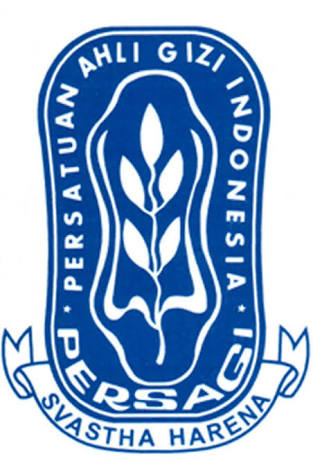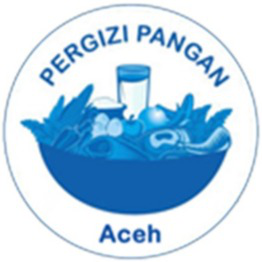The Extraction and Nano Particles Production of Moringa Leaf Bioactive Compounds and Their Identification
Abstract
Moringa leaves (Moringa oleifera) is a vegetable plant from the Brassica order and belongs to the Moringaceae family, known as the “Magic Plant” which has a wide variety of protein content contained in it. Therefore, the bioactive compounds used are Moringa leaves (Moringa oleifera) which have such great potential that they can be developed as raw materials for medicine. However, because the secondary metabolite compounds contained by plants have hydrophobic properties. This property can be one of the obstacles for these secondary metabolites to be easily absorbed by the body because of their nature which is difficult to dissolve in body fluids so that they can be easily degraded by the body's enzymatic system, to overcome this problem Nanoparticles can be a solution in overcoming this problem. the manufacture of nanoparticles has been carried out. To produce nanoparticles of Moringa leaf bioactive compounds, synthesized using tween 80 surfactants, has been carried out using the spontaneous emulsion method. The bioactive compounds contained in Moringa leaves (Moringa oleifera) are: (1) 9-Octadecenoic acid (29.64%), (2) Hexadecanoic acid (18.42%), (3) Octadecanoic acid (7.07%), (4) Oleic Acid (5.88%), and (5) 14-Methyl-8-hexadesin-1-ol (5.47%). Synthesis using four different concentrate masses of these compounds, namely: 2 mg, 1.5 mg, 1 mg and 0.5 mg dissolved in 100 ml of ethanol, resulted in an average diameter of each nanoparticle of 15.9 nm; 15.5nm; 14.7nm; and 14.8 nm. The polydispersity index is 0.306; 0.258; 0.122; and 0.282. From the results above, it has been shown that the process of synthesizing nanoparticles of secondary metabolites of ethanol extract using the spontaneous emulsion method has produced small-sized particles. This allows the development of site results to be used in applications in various fields such as in the pharmaceutical field in the drug development process.
Full Text:
PDFReferences
. M. V. S. P., & . A. U. (2007). Cytotoxic Effect of Moringa Oleifera Leaf Extracts On Human Multiple Myeloma Cell Lines. Trends in Medical Research, 2(1), 44–50. https://doi.org/10.3923/tmr.2007.44.50
Abdulrahman, F. I., & Onuoha, S. C. (2020). Antioxidant and antidiabetic properties of Moringa oleifera leaves and their potential therapeutic applications. Journal of Applied Pharmaceutical Science, 10(3), 113-119. https://doi.org/10.7324/JAPS.2020.103016
Aboelwafa, A.A ., El-Mokhtar, M.A., El-Kshef, H.A., & El-Sayed, Y.S. (2020). Tween 80-coated silver nanoparticles: synthesis, characterization, photocatalytic and antimicrobial activity. RSC Progress, 10(7), 3822-3837. doi: 10.1039/C9RA06978E
Ali S, Khan MR, Shah MR, et al. Chemical composition, antioxidant and antimicrobial activities of essential oil of Moringa oleifera from Pakistan. Nat Prod Res. (2021) Apr 13:1-5. doi: 10.1080/14786419.2021.1904484. Epub ahead of print. PMID: 33848100.
Amaglo, N. K., Bennett-Lartey, S. O., & Noguchi, M. (2018). Nutritional and medicinal use of Moringa oleifera Lam. leaves: a review. Journal of Medicinal Plants Studies, 6(6), 1-8.
Briganti, E., Liverani, S., & Ferruti, P. (2016). Nanopartikel Sebagai Cara Baru Pemberian Obat. Jurnal Medis Ilmiah Farmasi, 3(2), 37–50.
E. T. Akintoye et al. (2020)Antioxidant and antimicrobial activities of Moringa oleifera leaves and seeds in different solvents Page numbers:1-10.https://www.sciencedirect.com/science/article/pii/S2214750020301055
Ghosh, S., Dasgupta, S., & Ghosh, S. (2019). Tween 80 stabilized copper nanoparticles: synthesis, characterization and antimicrobial activity. Journal of Materials Science: Materials in Electronics, 30(17), 16057-16065.
Ghotbi, Z., & Rezaei, M. (2019). Nanoparticles in cosmetics and personal care products: A review of regulatory status and toxicity mechanisms. Journal of applied toxicology, 39(1), 26-41.
Gupta, A., & Eral, H. B. (2019). Nanoparticles in drug delivery: a review of recent trends. Indian Journal of Pharmaceutical Sciences, 81(1), 77-88.
Jennifer Lutz (2018) Ayurvedic Medicine and Its Role in Treating Chronic Diseases Page numbers: 1-5.https://www.healthline.com/health/ayurvedic-medicine-chronic-diseases
Kaur, R., Goyal, A. K., & Rath, G. (2018). Drug delivery using nanoparticles: a review. Journal of nanoparticle research, 20(8), 1-23.
Kim MK, Chung JH, Park JH. Potential application of Moringa oleifera seed extract to protect human skin from UV radiation. Int J Mol Sci. 2018 Aug 8;19(8):2124.
Kumari, D. J. (2017). Nutritional and therapeutic potential of Moringa oleifera leaves: an overview. International Journal of Food Science & Technology, 52(12), 2429-2438.
Kitson GK, Larsen BS, M. C. . (2012). Gas chromatography and mass spectrometry: a practical guide. Choice Reviews Online, 49(11), 49-6299-49–6299. https://doi.org/10.5860/choice.49-6299
Kushwaha, S., Chawla, P., & Kochhar, A. (2014). Effect of supplementation of drumstick (Moringa oleifera) and amaranth (Amaranthus tricolor) leaves powder on antioxidant profile and oxidative status among postmenopausal women. Journal of Food Science and Technology, 51(11), 3464–3469. https://doi.org/10.1007/s13197-012-0859-9
Madhuri Parikh (2020) Skin Health: How to Protect Your Skin and Prevent Prevalent Skin Conditions Page numbers: 1-10. https://www.ncbi.nlm.nih.gov/books/NBK493173/
Mozaffarian D, Benjamin EJ, Go AS, et al. Heart disease and stroke statistics--2015 update: a report from the American Heart Association. Circulation. 2015 Jan 27;131(4):e29-322. doi: 10.1161/CIR.0000000000000152.PMID:25520374.
Obi, A., Egwurugwu, J. N., , S. O. Ojefa, M. C. O., Ekweogu, C. N., & Ogunnaya, F. U. (2018). Immunomodulatory Effects of Hydromethanolic Extract of Moringa oleifera Leaf on Male Wistar Rats. Nigerian Journal of Experimental and Clinical Biosciences, 6(1), 26–32. Diambil dari www.njecbonline.org%0A
Padalia, R.K., Gorsi, M., Pandey, V., Shakya, A., Singh, V., Jain, M., Arya, N. dan Singh, A. . (2017). Manfaat kesehatan daun kelor (Moringa oleifera): suatu tinjauan. Journal of Pharmacognosy and Phytochemistry., 6(7), 153–155.
Rachmawati, H., Reker-Smit, C., Lub-de Hooge, M. N., Van Loenen-Weemaes, A., Poelstra, K., & Beljaars, L. (2007). Chemical modification of interleukin-10 with mannose 6-phosphate groups yields a liver-selective cytokine. Drug Metabolism and Disposition, 35(5), 814–821. https://doi.org/10.1124/dmd.106.013490
Rajendra Kumar Singh and Rohit Srivastava (2019)Understanding Nanoparticles: Basics, Concepts, and ApplicationsPage numbers: 1-261 https://www.springer.com/gp/book/9789811363785 .
Raza, A., Hayat, U., Rasheed, T., Bilal, M., Iqbal, H. M. N., & Zhu, J. (2019). Recent advances in drug delivery via nanocarriers for cancer treatment. Journal of Drug Delivery Science and Technology, 51, 319-332.
Rodrigues, H. G., Vinolo, M. A. R., Magdalon, J., Fujiwara, H., Cavalcanti, D. M. H., Farsky, S. H. P., … Curi, R. (2010). Dietary free oleic and linoleic acid enhances neutrophil function and modulates the inflammatory response in rats. Lipids,45(9),809–819. https://doi.org/10.1007/s11745-010-3461-9
Santos AR, Costa SK, de Lima TC. The Anti-Inflammatory Effect of Flavonoids from Achyrocline satureioides in a Model of Acute Lung Injury Induced by Lipopolysaccharide in Mice. Molecules. 2018 Jul 27;23(8):1936. doi: 10.3390/molecules23081936. PMID: 30060489.
Sacks FM, Lichtenstein AH, Wu JHY, et al. Dietary Fats and Cardiovascular Disease: A Presidential Advisory From the American Heart Association.Circulation.(2017)Jul 18;136(3):e1-e23. doi: 10.1161/CIR.0000000000000510. Epub 2017 Jun 15. PMID: 28620111.
Sahu, P. K., & Jena, P. K. (2018). Spontaneous emulsification solvent diffusion method for preparation of nanoparticles: a review. Advanced Powder Technology, 29(7), 1461-1476. doi: 10.1016/j.apt.2018.03.029
Sharmin F, Islam MR, Moniruzzaman M, et al. Phytochemical and pharmacological profile of Moringa oleifera Lam. from the sub-Himalayan region of Bangladesh. BMC Complement Med Ther. (2021) Mar 15;21(1):96. doi: 10.1186/s12906-021-03209-8. PMID: 33722202; PMCID: PMC7952472.
Shakya, A., Padalia, R.K., Pandey, V., Jain, M., Arya, N., Singh, V., Gorsi, M., dan Singh, A. . (2017). Pengaruh Ekstrak Daun Kelor (Moringa oleifera) Terhadap Tingkat Stres Oksidatif pada Tikus Jantan dengan Masalah Reproduksi Studi Eksperimental. Jurnal Farmakognosi dan Fitokimia, 6(7), 156–164.
Siew, Z. Z., Chan, E. W. C., & Wong, C. W. (2022). Hydrophobic bioactive constituents of cinnamon bark as inhibitor of polyphenol oxidase from Musa acuminata ‘Mas’ peel. Biocatalysis and Agricultural Biotechnology, 45. https://doi.org/10.1016/j.bcab.2022.102504
Singh, P., Sharma, A., & Rajput, V.S. (2018). Application of surfactants in the food industry – Review. Journal of food science and technology, 55(10), 3879-3889. doi: 10.1007/s13197-018-3359-y
Singh, R. K., Tiwari, P., & Singh, R. (2020). Application of Moringa oleifera in nanoparticle synthesis: An overview. Journal of King Saud University-Science, 32(1), 794-800.
Singh, S., Nair, V., Jain, S., & Gupta, Y. K. (2008). Evaluation of anti-inflammatory activity of plant lipids containing α-linolenic acid. Indian Journal of Experimental Biology, 46(6), 453–456.
V.S., N., K., B., & M., D. (2003). Drumstick leaves as source of vitamin A in ICDS-SFP. Indian Journal of Pediatrics, 70(5), 383–387. Diambil dari http://ovidsp.ovid.com/ovidweb.cgi?T=JS&PAGE=reference&D=emed9&NEWS=N&AN=36733497
Vila, A., Sánchez, A., Tobío, M., Calvo, P., & Alonso, M. J. (2002). Design of biodegradable particles for protein delivery. Journal of Controlled Release, 78(1–3), 15–24. https://doi.org/10.1016/S0168-3659(01)00486-2
Waterman, E., & Lockwood, B. (2007). Active components and clinical applications of olive oil. Alternative Medicine Review, 12(4), 331–342.
Yong-Bing, X., Gui-Lin, C., & Ming-Quan, G. (2019). Antioxidant and anti-inflammatory activities of the crude extracts of moringa oleifera from kenya and their correlations with flavonoids. Antioxidants, 8(8). https://doi.org/10.3390/antiox8080296
Zhao, Y., & Sun, M. (2019). Preparation of curcumin-loaded nanoparticles via a spontaneous emulsification solvent diffusion method and their in vitro release properties. Journal of Food Science and Technology, 56(7), 3346-3356. doi: 10.1007/s13197-019-03892-0
DOI: https://doi.org/10.35308/jns.v4i1.7553
Refbacks
- There are currently no refbacks.
Managed by Department of Nutrition, Faculty of Public Health
Published by Universitas Teuku Umar ,
Website: http://jurnal.utu.ac.id/JNS/index
Email: jns@utu.ac.id
Phone/Fax: +62-852-7736-5563; E-mail:
This work is licensed under a Creative Commons Attribution-ShareAlike 4.0 International License.














